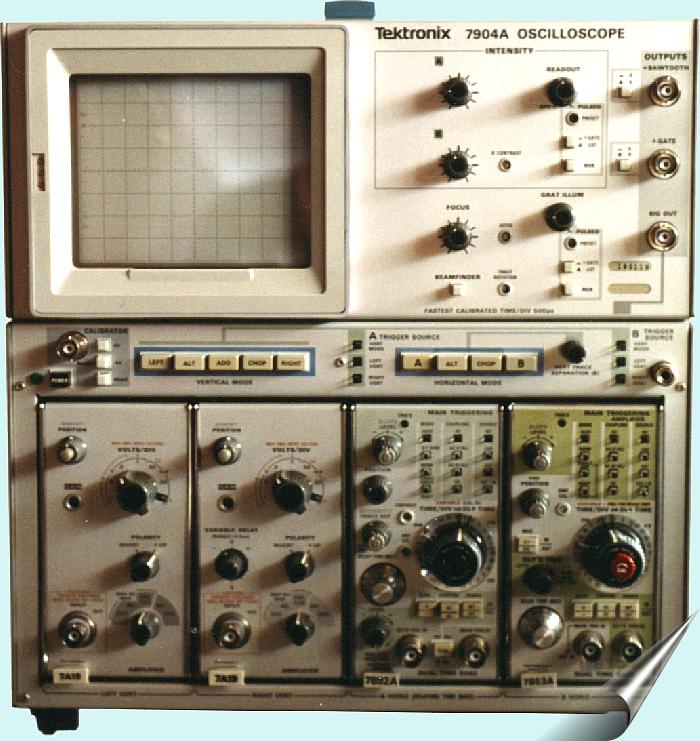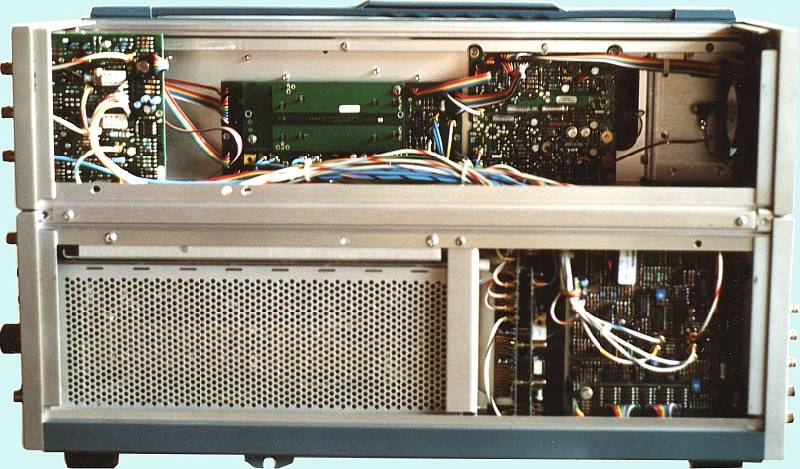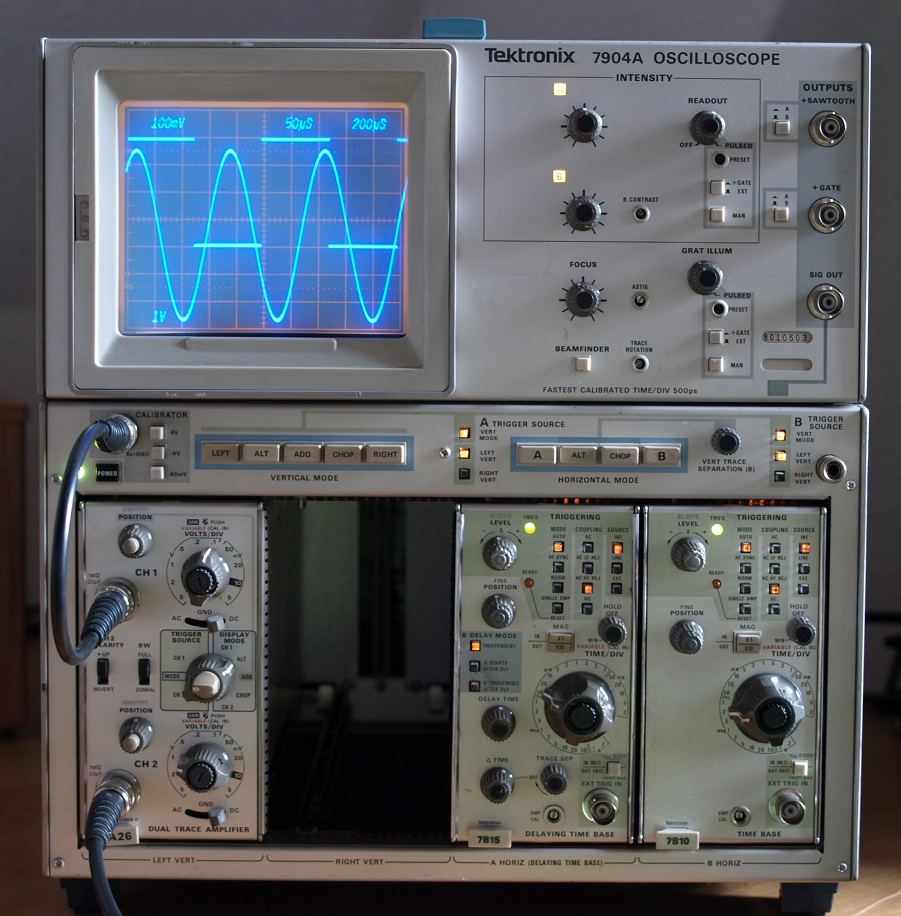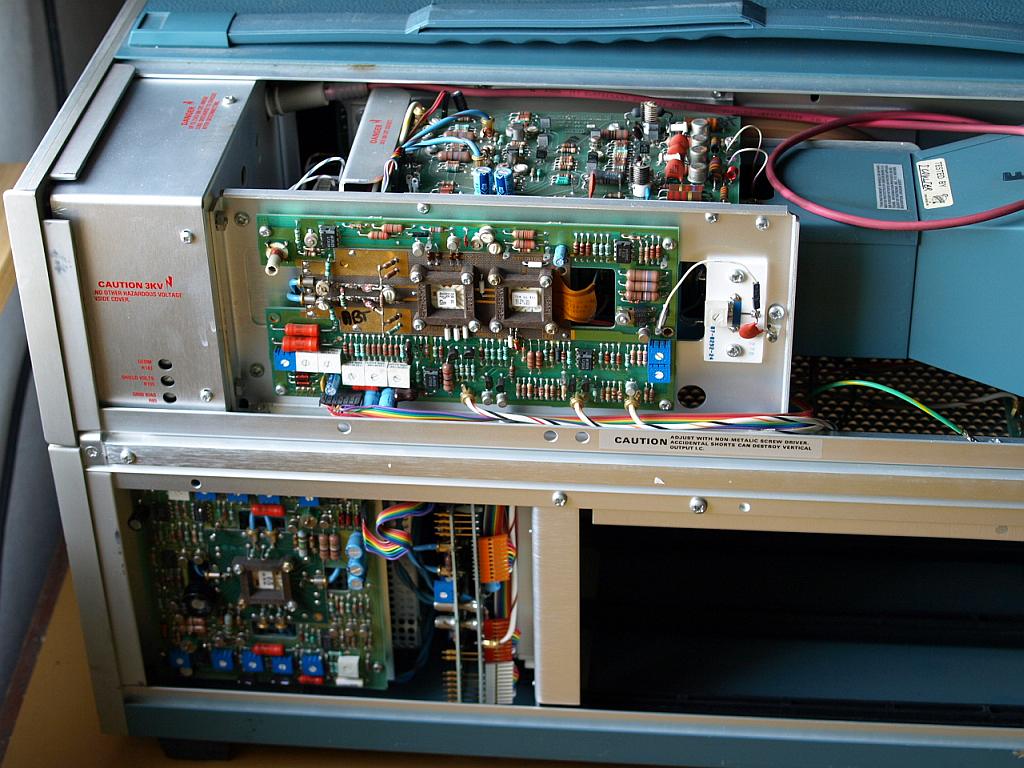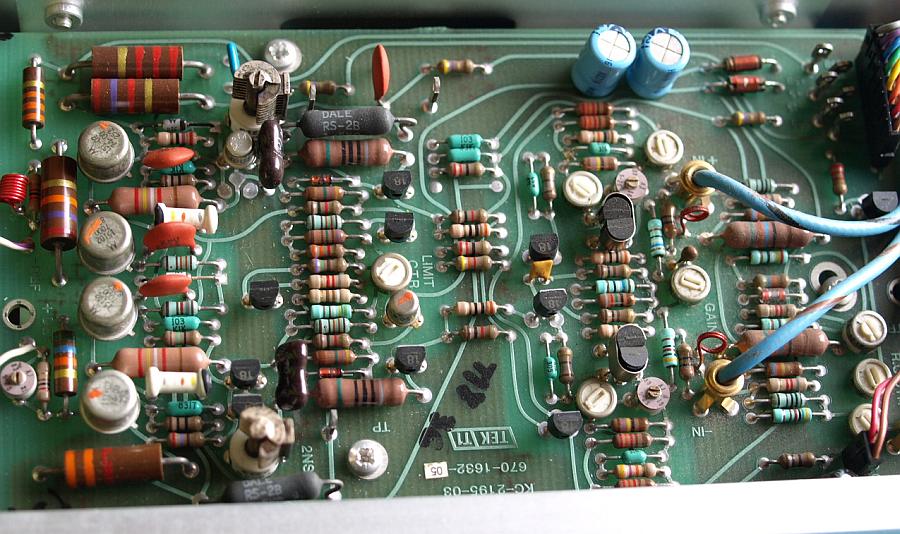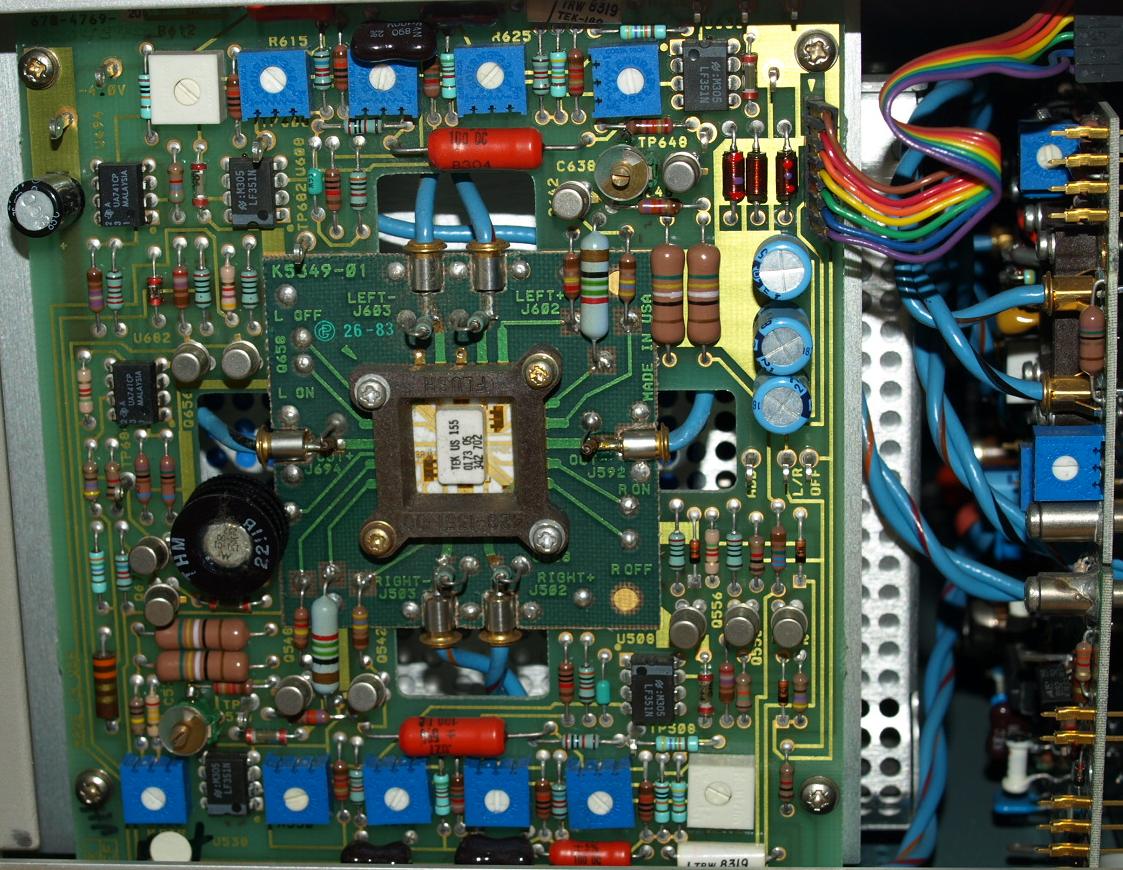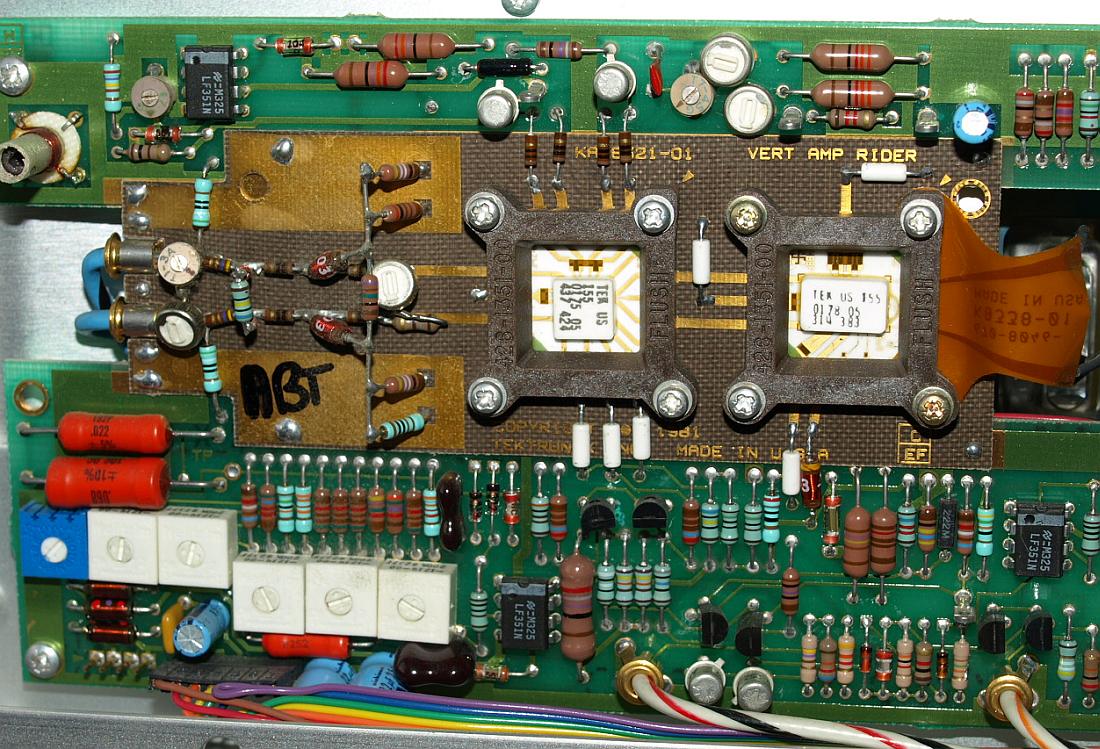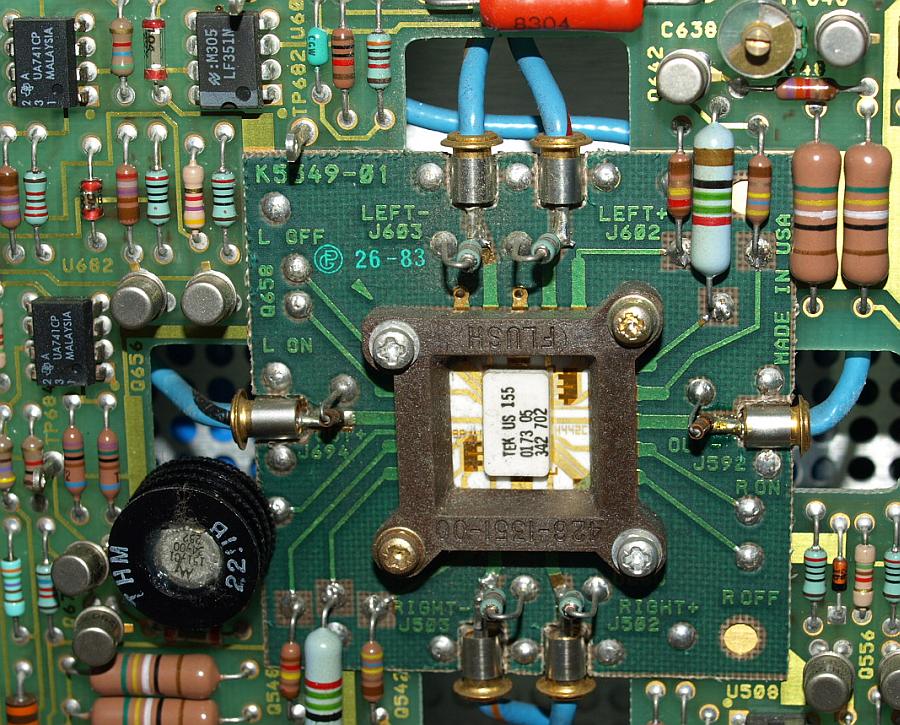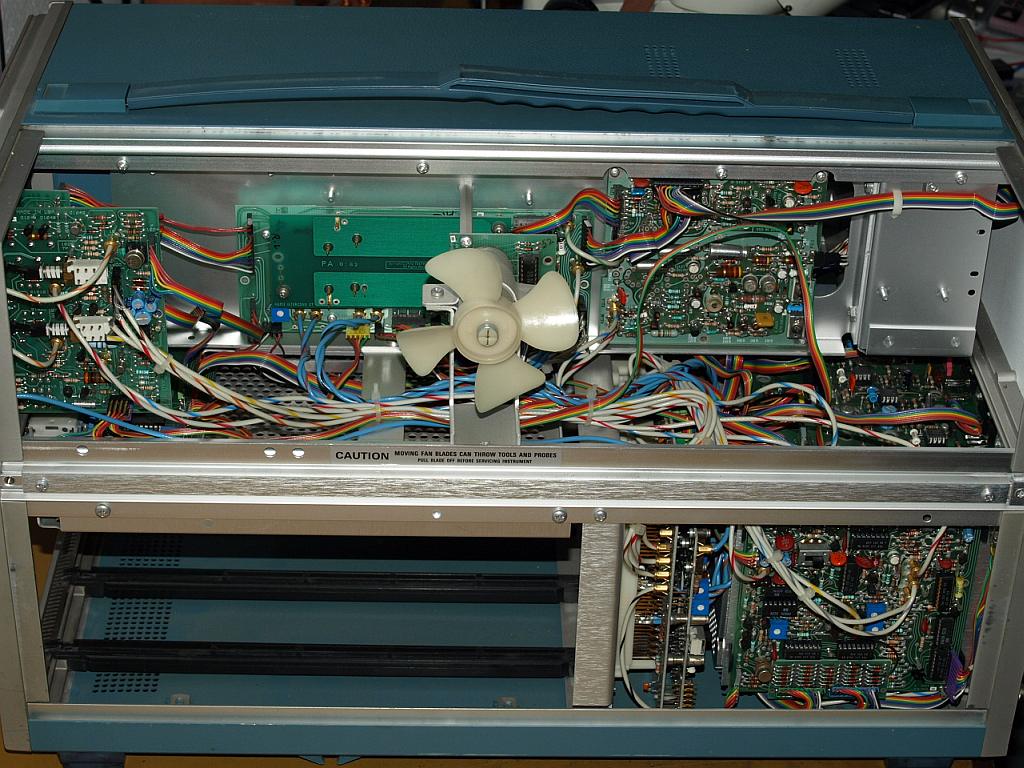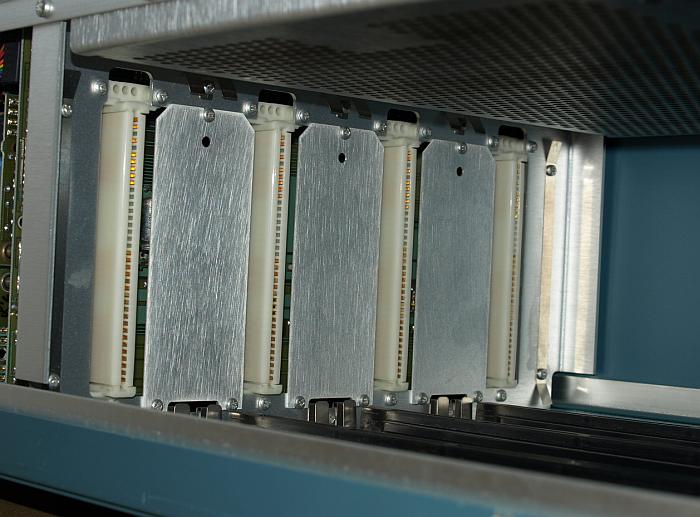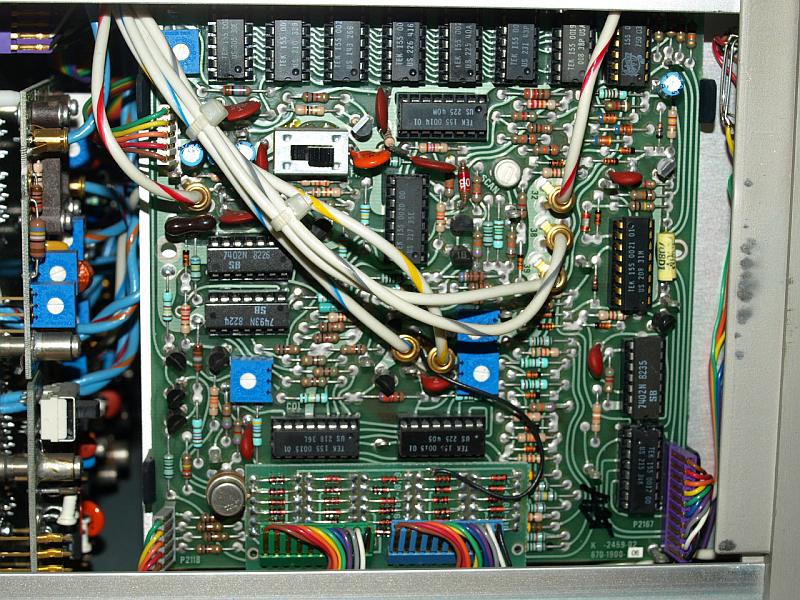This
instrument has the Option 78, the blue P11 Phosphor CRT. The screen
shows two independent voltage sources. With the 7904A Dual Trace a
time-base ratio of approximately 1:1000 is viewable, a wonderful scope,
I like it very much.
My experience with different
phosphors: this blue phosphor has a higher writing speed and a better
sensitivity on film cameras. Even nowadays with a digital camera I
found out it's easier to make photos from a blue trace, but the
human eye is more sensitive for the green P31 standard phosphor. I am
used to work with both phosphors, with the green phosphor small
details are little better observeable, the blue phodphor needs more
intensity for the same detailed results. On photos or under bright
graticule illumination settings the blue one is better observable
because of it's colour contrast between beam and graticule
illumination. Really the best is having two scopes - green and blue -,
because you can't get enough from that scope. To see the viewable differences between P11 and P31 follow the
link.
Um die sichtbaren Unterschiede zwischen P11 und P31 besser beurteilen
zu können,
folge dem Link, an dessen Ende finden sich detailreiche
Fotos. Nochmal: beim Arbeiten im Labor ist der grüne Standard P31 Phosphor etwas
günstiger, da das Auge anscheinend ein wenig besser darauf
reagiert, auf den Fotos jedoch verblasst das Grün immer mehr
als es tatsächlich intensiv geleuchtet hat, auf Fotos kommt der
blaue P11 exzellent rüber und bietet auch im Labor die wohltuende
Möglichkeit die Farbe zu wechseln. Das alte
502Ahat
z.B. einen in blaugrün erscheinenden Phosphor mit rotem Grid,
sieht auch klasse aus. Geräte mit verschiedenen Farben
entspannt das Arbeiten. Zur vollständigen Entspannung schaltet man
eine altes Röhrenscope ein, deren CRT noch eine Spur schärfer
einstellbar ist als die schnelleren Geräte der nachfolgenden
Generationen.
Kommt mir jetzt aber bitte nicht mit der
Aussage: ein Digitalscope hat gelb, cyan, grün und pink und ist
doch auch schön bunt. Das
weiß ich selber, ein LCD Display ist mir viel zu langweilig,
hellblau und rosa war ich eigentlich früher von
der Babykleidung gewohnt, getrennt nach Buben und Mädchen.
Nicht falsch verstehen, ich bin ein Freund von hellblau (bei
Scopes sowieso), man bemerke den häufigen hellblauen Hintergrund
dieser Webseiten. LCD
ist für mich keine Entspannung beim Messen, das wäre schon
Arbeit - mit Oszilloskopen mit LCD Displays damit verdient
heutzutage sein
Geld am Arbeitsplatz und deswegen habe ich auch kein Problem mit diesen
technologisch tollen neuen Geräten - aber zu Hause werden die
digitalen nur genutzt in Fällen in denen es nicht mehr anders geht
(und das ist selten). Der Stil muss einfach gewahrt
bleiben. Habe selber Digital-Oszis in der Nutzung, trotzdem wird oft
der
7834 Analog Speicher genutzt da es mir einfach mehr Spaß macht an den alten Teilen zu drehen - man kann das
nicht beschreiben.
The fan is not loud, (no build-in fan in the older 7904 - 100% noiseless).
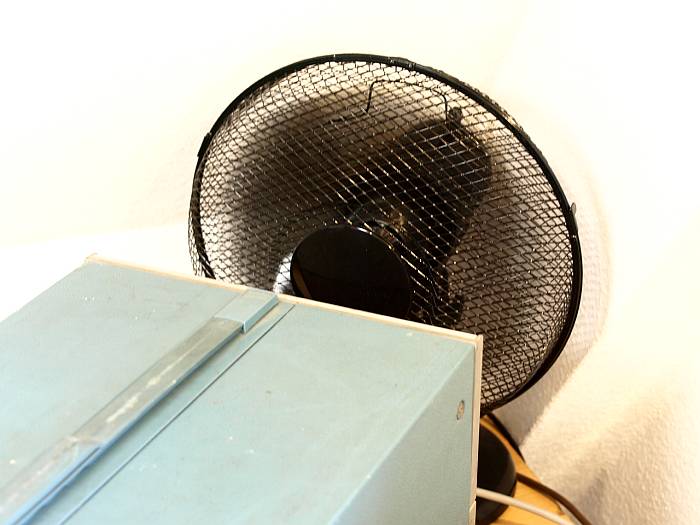
Behind my bigger scopes stands nowadays always a fan spinning with a
lower rpm. The temperature rise in the switching power supply and the
whole scope remains lower. A 7xxx with four powered Plug-in's get
warm, especially during summertime in a hot room - sometimes too warm -
heat reduce the lifetime of the parts. Such a fan costs 12 Euros and
cools down all parts, also the user.
Mainframe slots metal shielded, (open in the 7904).
A 7904A in a good condition - buy it.
